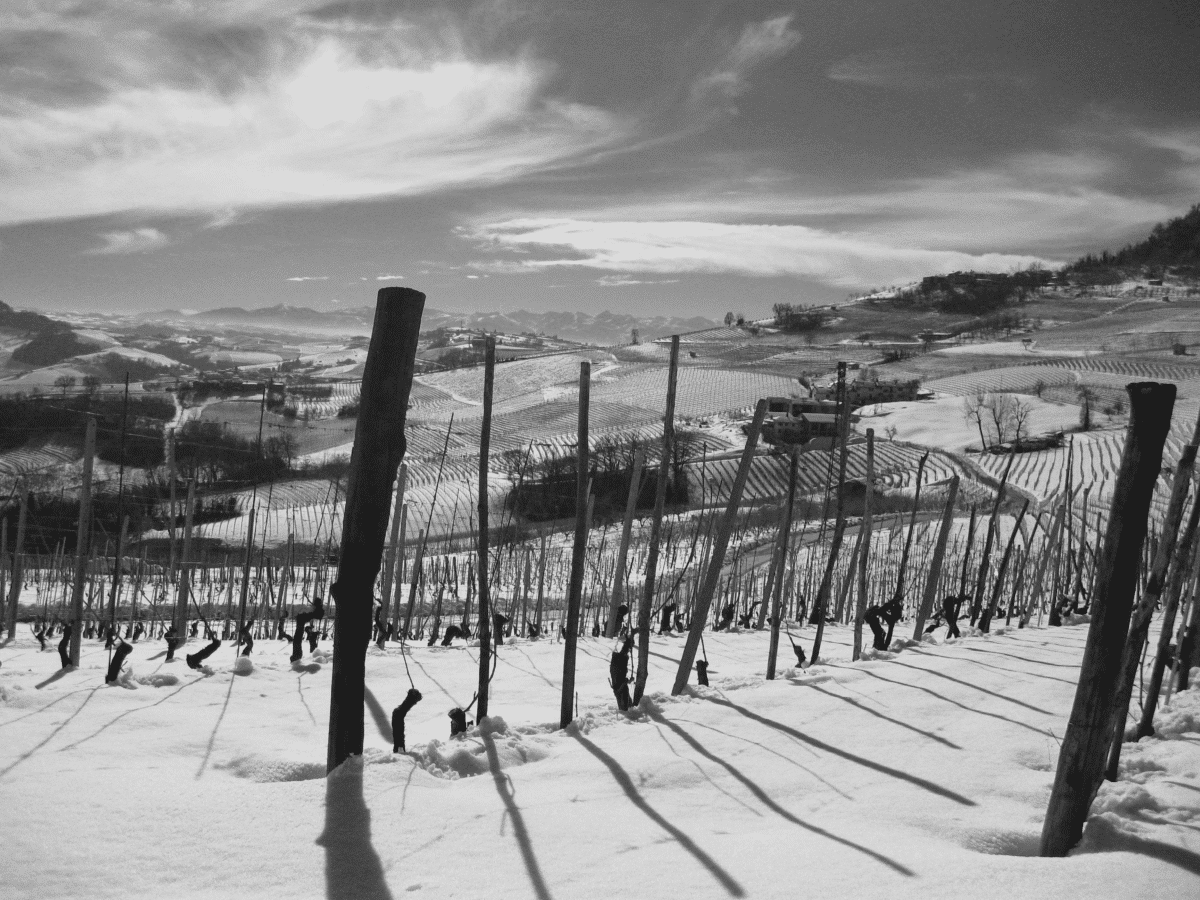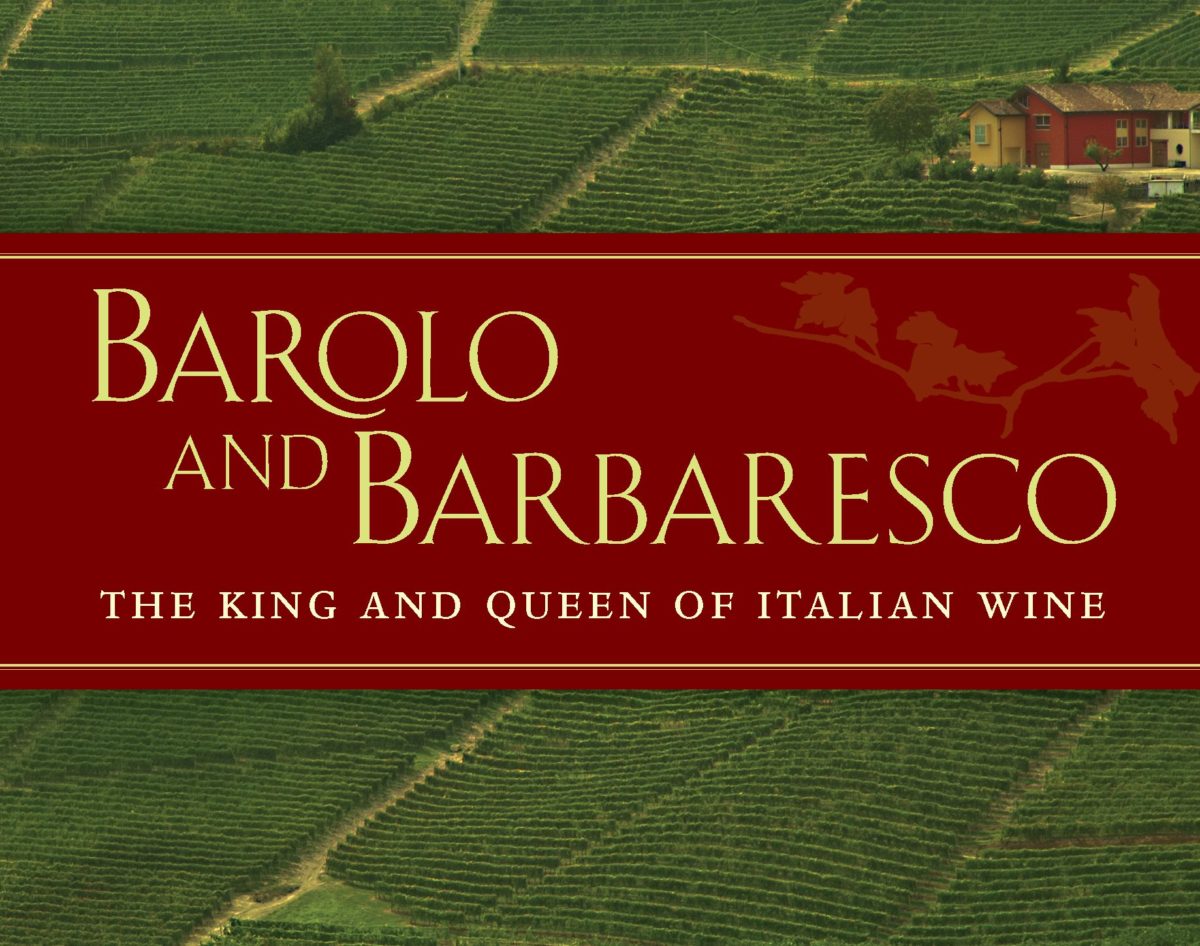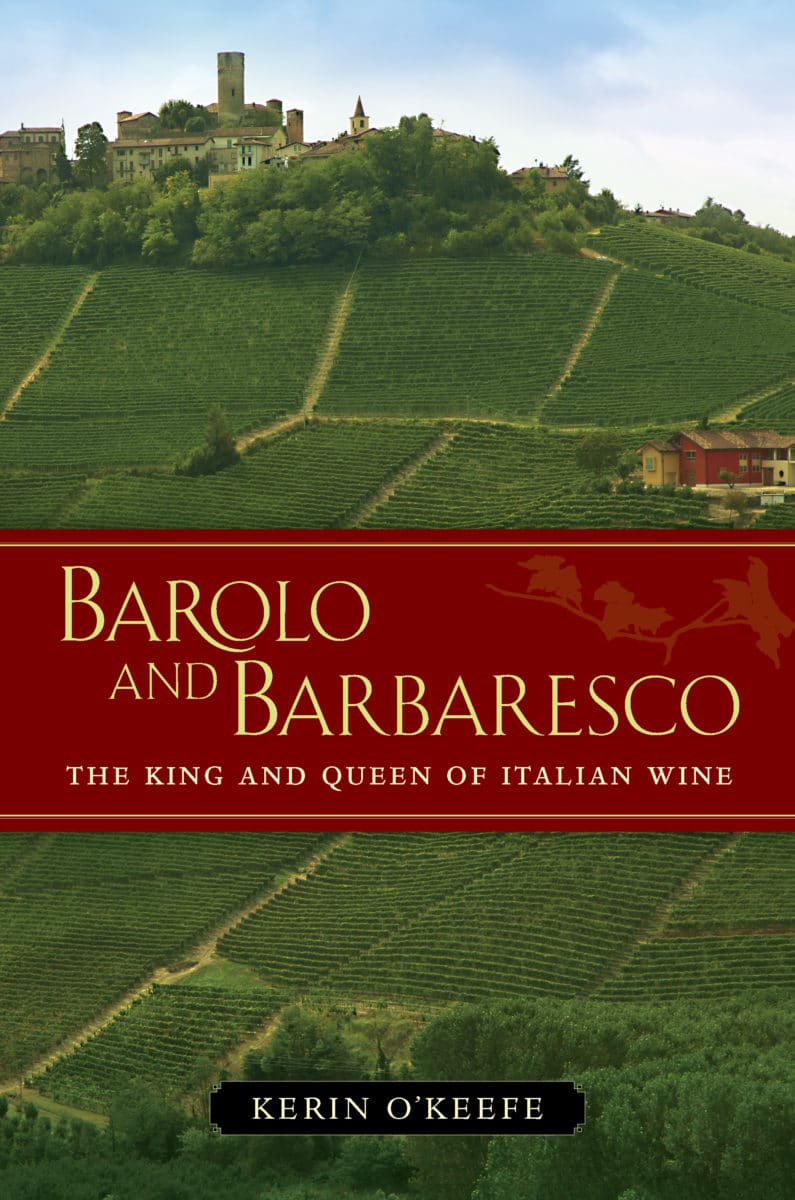Author: Kerin O’Keefe Publisher: University of California Press, 2014
Barolo and Barbaresco by Kerin O’Keefe is the rare wine book one might read from beginning to end and take immense pleasure from it, frustrated only by one’s inability to finish it in one sitting and by the absence in one’s cellar of most of the specific wines she describes so well and often lovingly (and sometimes not so lovingly — she will come down hard on wines she hasn’t enjoyed, even the Bruno Giacosa’s Barbaresco Santa Stefano 2000, extolled by others, and she is satisfyingly brutal about the commune Monforte d’Alba’s “botched…butchered” delimitation of its Barolo vineyards).
Nebbiolo, she tells us, “is one of the least planted [grapes] in the world.” All the more reason for its two manifestations that are the subjects of this book, Barolo and Barbaresco, to be as special, if not precisely rare, as they are. As O’Keefe says toward the beginning of her book, these two wines “are some of the most tantalizing and fascinating wines on earth.” And she goes on to tell us why they are and how they are and to make us believe, as much as words can reproduce a sensual experience, that indeed they are.
Both wines are required by law to be made only with Nebbiolo. And both are, as she writes, “complex wines with full-bodied, tannic structures that permit long cellaring.” But she does explain their differences, among them: Barolo, which has a longer growing season, needs more time before it’s ideally drinkable and once it’s drinkable will remain so longer (so I’m encouraged concerning my own various bottles from the 1970s); Barbaresco (“one of the world’s most mesmerizing and compelling wines”) remains more giving in hot years (2007 and 2009, she suggests), and it’s less expensive than Barolo despite the fact that there’s a third more Barolo produced.
As for their similarities, both have what she calls “a luminous garnet color that turns to brick with aging.” They have similar fragrances, similar flavors, they share great depth. Most interesting, they “tend to be more complex as opposed to being simply powerful”—one wishes the opposite weren’t true of so many of today’s most celebrated wines.
Both wines are required by law to be made only with Nebbiolo. And both are, as she writes, “complex wines with full-bodied, tannic structures that permit long cellaring.” But she does explain their differences, among them: Barolo, which has a longer growing season, needs more time before it’s ideally drinkable and once it’s drinkable will remain so longer (so I’m encouraged concerning my own various bottles from the 1970s); Barbaresco (“one of the world’s most mesmerizing and compelling wines”) remains more giving in hot years (2007 and 2009, she suggests), and it’s less expensive than Barolo despite the fact that there’s a third more Barolo produced.
There is ample space in this book devoted to the many technical factors that go into the cultivation of the grapes that make these distinctive wines: soil, climate, barrels, etc. But there is, thank goodness, much more space devoted to the history of the individual wines and to the winemakers, particularly those many whom O’Keefe has interviewed over the years. These interviews appear in what she calls “producer profiles, broken down village by village. I’ve chosen those producers I feel are making outstanding wines that beautifully express Nebbiolo and their respective village or vineyard area, as well as those that through blending [of crus, not of different grapes] have created quintessential Barolos and Barbarescos that reflect the beauty, complexity, and fascination of Italy’s most noble grape and the rolling Langhe hills.”

To give a sense of what kind of statements she elicits from the sometimes reticent winemakers, here are two:
Beppe Rinaldi, upholding the traditionalist side in the ongoing battles between traditionalists and modernists, says: “Barolo is a difficult wine because it isn’t like other wines from around the world, making it more difficult to understand at first. But Barolo must remain authentic, and we shouldn’t try to imitate other wines from around the world.”
Somewhat conversely, Pio Buffa says, in words that might make other winemakers shake in their wallets, “If you buy my Barolo and have to wait ten years to drink it, then you should also be able to wait ten years to pay me.”
Or forty years. Or fifty. Because that’s how long you can keep many of these wines and still take immense pleasure from them. In the meantime, even if the only Barolo or Barbaresco you own is from the future, read this book. It will inspire you to hope the future comes quickly.*
* One discordant note, which Ms. O’Keefe is unlikely to be responsible for, is the index. Wine lovers will be unable to look up specifics, for example the names of vineyards (no Monfortino in this index, no Asili, no Cannubi!) or wines (Spanna mentioned in the text but not in the index). There is no way to track her comments about “soil” or “global warming” or pretty much anything but the names of some of the people who appear in the text and of some wineries. ![]()

